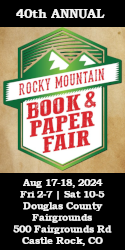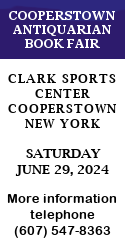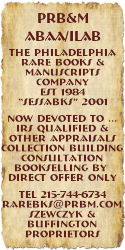Dull Old Saws and Boring Drills
Throughout most of my thirty-six years of teaching English in boarding school—like gathering samphire, in Shakespeare’s words, a dreadful trade—I managed to eke out a living if not a life by dealing in P.G. Wodehouse books and repairing, restoring, and occasionally selling antique reed organs—those pedal-pumped parlor instruments put out of business, around the turn of the last century, by the upright piano. There is small demand for such instruments today; but there is some demand (“Next week?”) from owners who would like to see the instrument restored as Granny, or Auntie, knew and played it. This sort of demand I can often meet—unlike the demands of students and, worse, of their parents (“Tomorrow?”), which somehow I withstood for a third of a century.
In this almost lost if not losing profession (I am the only professional reed-organ man left in the state of Maine), I have learned marvelous lore useful in other walks of life; and I hasten to share it with you now. Deriving it from several sources, I here put all this lore on the lips of a man who worked on reed organs for decades, as a hobby. Let us call him Julian Howard, for his name was Julian Howard, vir egregiae iustitiae, whose teeth in later life didn’t fit as closely as the amazing joints he could make between two pieces of American black walnut, with the result that he spoke with a kind of inspirational lisp…forming, as it might be, the dialect of a genius craftsman...about fifteen years older, when I first knew him, than I am today as I turn 63. At first I set out to duplicate that lisp here; but in retrospect that seemed disrespectful, so I have recorded his wisdom irrespective of the dialect. Telling you that he pronounced “that” as “zhat” is enough local color.
That Can Be Fixed
Julian was gazing at an 1865 Smith-American parlor organ, a mouse condominium. I bought it, restored it, and it has had a happy home for thirty years. “It never rains on a golf course,” he told me. Optimism is not all bad. A little ninth-grader once politely reminded me that she had a “learning disability.” “Well,” I said, “let’s see if we can get rid of it. You don’t need that all your life.” It was to her a wholly new concept—which, when she imparted it to her parents, generated some generous wrath in the mother. “What are you trying to do to my daughter?” she obliquely asked. “Fix her,” I obliquely replied. She was earning Honors grades in English when she graduated three years later. So was her mother. There are, indeed, unrestorable organs and, I have to admit, apparently unteachable students; but with luck, we can move on to the next lesson.
Always Use the Right Tools
My father would use a hammer to start a screw. Teachers often impose their technique upon the work of art they’re teaching. The work of art is itself the tool, not the piece of furniture. Organ restoration requires only a few special tools and materials: a reed-slip, which can be fashioned from a hair-curler; numerous clamps, the small ones ideally fashioned from wooden clothes-pins, still after a hundred years beautifully manufactured by the Penley family in South Paris, Maine; shutter-hinges, which can be fabricated from an old linen napkin and the ready-made hem material found in fabric-shops (I always choose crimson or orange, but you can use any of a multitude of colors). If I had an apprentice, I would say to him, “Thurlow” (if his name was Thurlow), “the Instrument itself will tell you how to fix it and with what tools and materials—some of them available from your grandmother.” The same is true of students. Too many teachers—and their students’ mothers—listen with their own mouths…when they should be listening to the mouths of their grandmothers. “Old men forget,” wrote Shakespeare (Henry IV, Part II or Henry V, I forget which); but old ladies don’t forget anything that counts. Hems and hair-curlers. Clothes-pins.
That’s the Best Glue They Is
Well, forty years ago Franklin Liquid Hide Glue was, indeed, the best glue available in hardware stores for wood, felt, and leather, almost as good as the hot hide glue used by professional factories. Then, ten years later, they took the thiourea out of it, and it became useless. Thiourea—which means just what it looks like meaning (the Pee of the Gods)—is a poison, present constantly in all our systems, and it made the glue stick. But on the off-chance that some deficit-attentioned child would ingest it in my workshop (where the notice Keep Away from Children is boldly posted and, by me, always obeyed), the FDA or DAR or SPQR or IHS or somebody deleted it from the recipe. We professionals now rely on the hide glue formula older than Shakespeare: heat the crystals with water to the consistency of the cream you would like on strawberries and apply. It sticketh closer than a brother but it can always be dissolved, if need be, by an application of hot water and a sterling table knife. I respect the rights of animals; but I believe it was Ogden Nash who defined the formula, recalling the jockey who, toward the end of the race, whispered in his mount’s ear:
Roses are red, violets are blue;
Horses that lose are turned into glue.
Gluing Without Clamping Is a Waste of Time
The glue we use on organs is the glue of western civilization: it is amazingly strong and long-lasting, but only when, ironically, the moisture that makes it soluble evaporates. Such evaporation cannot be left to nature: you have to help squeeze the moisture out, with clamps. Every mind, especially the adolescent’s and the aging man’s, is held together by a kind of glue from which the moisture (“moistenger,” as a member of the school Maintenance Department called it) needs to be removed. The clamp? I don’t know. The Priest? The Politician? The Lunatic, The Lover, and The Poet, of imagination all compact? The Pedagogue? The Prima Donna? The Press? The Publisher? The Prescription? I don’t know, but the glue is elsewise useless. So we employ the clothes-pin, the pipe-clamp, the C-clamp, the spring-clamp, and the rubber bands used by local lobstermen to clamp the claws of local lobsters. When I was a boy, cruel hand-carved wooden pins were used to disenable the lobster’s more dangerous claw, usually the left—sinister; but now these rubber bands close both claws. They come in red, yellow, blue, and tan, and they have the amazing strength of about 4 pounds per square inch. When lobster here costs $14.99 a pound, these invaluable tools cost nothing. I have a large supply, but the blue ones seem to work the best. Even so, I use the tan ones on rosewood. (You can’t be too careful, in this litigious age.)
Avoid Gluing Grain-to-Grain
We always glue two pieces of wood together across the grain, if we can. My late wife, who put up with eighteen years of my doings, shared with me the love of music and literature, but we rarely shared the love of examples thereof. She put George Eliot above Dickens, while I put Verdi above Peter, Paul and Mary. She revered Mrs. Henry Wood as I revered Wodehouse. But we were securely glued. My later wife, who quite reasonably decided after three years of marriage that she would prefer to be a veterinarian, shared every syllable of my literature and every measure of my music…and the glue didn’t hold. I realize that I am here imparting hard lessons to the youngsters who are starting out in married life…but they are darned good lessons if you want to rebuild reed organs! Glue across the grain.
Brushing Valve Leather is a Waste of Time
For more than a century, “valve leather” has been alum-tanned white kid-skin, one side of which is shiny, the other side rough. (I don’t believe that kids are raised to be sacrificed to this fate, but I taught a lot of kids who should have been.) To form a gasket, you glue the shiny side down; but to make a valve, you want the rough side down; and, in time (50-100 years) the leather dries out and the rough side becomes smooth. With a wire brush you can brush it to make it rough again, and, depending on the age of the leather, this procedure will save money (the leather that 30 years ago cost $4.95 a square yard rolls out now at much more than twice that), and the procedure will last less than a year. And a valve that leaks is curtains to an organ! The moral here, obviously, is that some things cannot be usefully restored: you need new material. I never actually said that to a parent, but I am not an honest man. Priceless unrestorable Wodehouse books have passed through my hands: a book, like valve leather, left in the rain defies the brush. “Brush up your Shakespeare,” as Cole Porter advised, and leave your Wodehouse alone; but replace your dried-up valve leather.
Safety First
Pure poppycock. At age 80, Julian Howard knew nothing of safety goggles or gloves or seat belts. He avoided the deadly threat of thiourea simply by not swallowing the glue. He avoided the dangers of a chain saw by felling trees with an axe and cutting them up with a 19th-century hand-saw…which, like Hamlet at his best, he knew from a hawk, and he sharpened it himself. With his bare hand he would remove an 18-pound reservoir spring from a reed organ: “Do the hinged board first and it’s less likely to bitecha.” True. An 18-pound reservoir spring at large could remove a whole hand: I myself wear gloves. Ahead of the banal commonplace of Safety, Julian C. Howard placed skill, craftsmanship, strength, common sense, and the needs of the instrument he was working on…all of these seemingly lost in the school-world I recently left…and in the world I live in now. Why does my step-ladder announce that the top step is not a step? Why do the desiccants in model railroad locomotive packages advise “Do not eat”? Why, if my hands were arthritic, would I need a drill press to open a bottle of pills and, if I were myopic, a magnifying glass to read the instructions thereon? Every organ I sell these days must be accompanied by the Government Warning: THIS INSTRUMENT IS NOT INTENDED FOR CHILD ABUSE. DO NOT PLAY WITHOUT PERFECT PITCH.
Rome Wasn’t Built in a Day
Well, it could have been…with enough money, many dedicated and well-paid laborers, and complete freedom from Deans, Department Heads, and Committees. After all, it doesn’t take much to civilize seven hills. To restore an average reed organ takes about a week, 8 hours a day for 5 days. To read—re-read—a Dickens novel takes me about a month, an hour a day for thirty days. To teach—i.e. make accessible and render enjoyable—a Dickens novel to fine students used to take me ten weeks. My pace in this regard meant open mockery from some colleagues who read fast and taught faster. But the glue has to set and dry, the boiled linseed oil and turpentine have to sink in, and all of life is, when you get right down to it, waiting. If you have a book, or if the magazines in the Waiting Room were new since Christmas, it’s not a bad life.
It’s Not the Heat, It’s the Humidity
According to N.T.P. Murphy in his monumental A Wodehouse Handbook ( London, 2006; Volume 2, “The Words of Wodehouse”), “this cliché apparently began in New York and was used in a play in 1906.” I don’t know what play, but Julian Howard said it all the time. As far as reed organs are concerned, this platitude, this “stained-glass attitude,” is less a cliché than a clairvoyant and sacred truth. As Robert Frost says to his Orchard, “Dread fifty above more than fifty below”—but not because of temperature. Cold doesn’t hurt an organ, as long as it’s not damp cold…even if it’s damn’ cold. Heat doesn’t hurt an organ, unless it’s dry heat. Like the strains of a waltz, glued wood swells and halts—with changes in humidity, but too much in either direction and the strain becomes too great: the dance is over. This all applies too, incidentally, to old books.
Someday I’ll Get to That One
Julian Howard was about 89 when he said that. Last summer I completely rebuilt one of the two or three dozen organs he had planned to do himself. I have a dozen such instruments here now…and three hundred Wodehouse books in stock. I have often wondered whether the secret of such long lives as Julian C. Howard’s isn’t procrastination. Why do today what you can do tomorrow, if you can find something else to do today? Maybe that even applies to dying. Someday I’ll get to that one, too. In the meantime, there aren’t enough hours in the day…although between three and five in the afternoon (not to mention between three and five in the morning) there are far too many.
Charles E. Gould, Jr., retired from the English department at Kent School, is an antiquarian bookseller and P.G. Wodehouse specialist. He lives in Kennebunkport, Maine.

























